The Q4 2024 national accounts from the Australian Bureau of Statistics (ABS) showed that Australian households remained trapped in recession.
As illustrated by the blue bars below, real per capita household consumption declined for an eighth consecutive quarter in Q4.
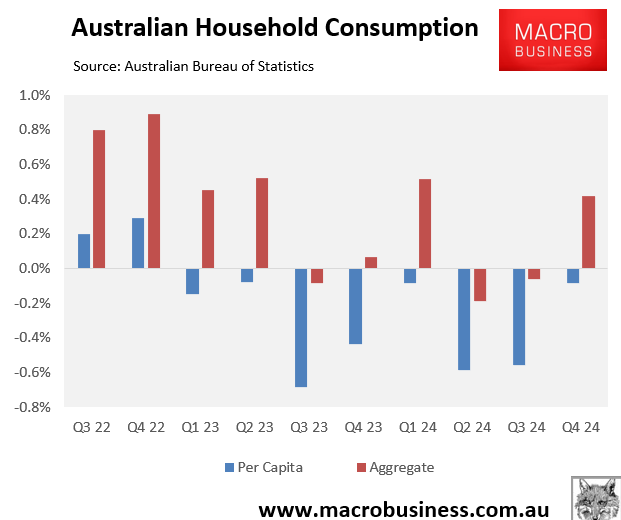
The decline in per capita household consumption followed an even steeper decline in incomes.
As illustrated in the following chart, real per capita household consumption had declined by around 8% from its mid-2022 peak as of Q4 2024.
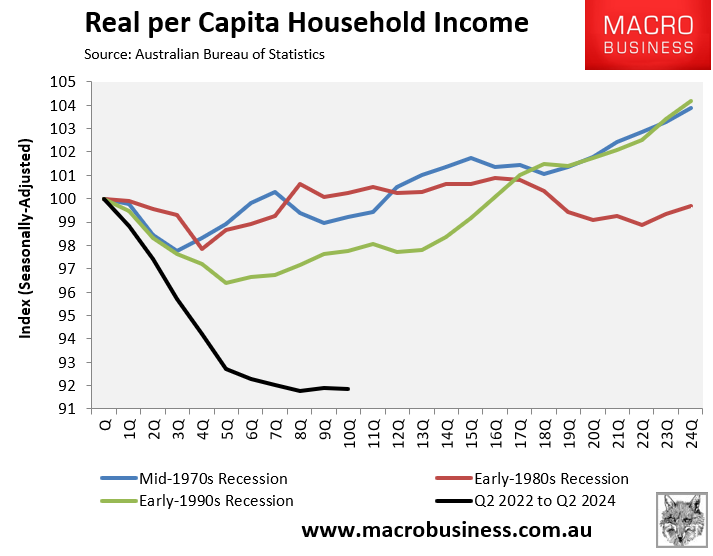
OECD data also suggests that Australian households had suffered the largest decline in the advanced world since Q4 2019, just prior to the pandemic.
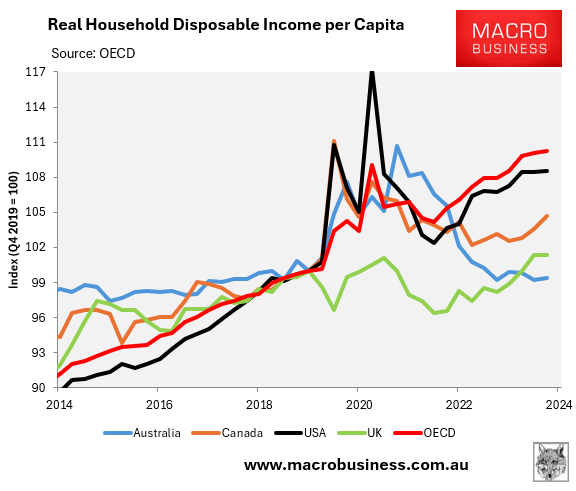
There were hopes that the Stage 3 tax cuts introduced on 1 July 2024, alongside February’s 0.25% interest rate cut from the Reserve Bank of Australia (RBA) would have stimulated consumer demand.
However, Tuesday’s retail sales figures for February from the Australian Bureau of Statistics (ABS) suggested that consumer spending has failed to launch.
As illustrated below by Alex Joiner from IFM Investors, retail sales decelerated in the early months of 2025 after a strong end to 2024.
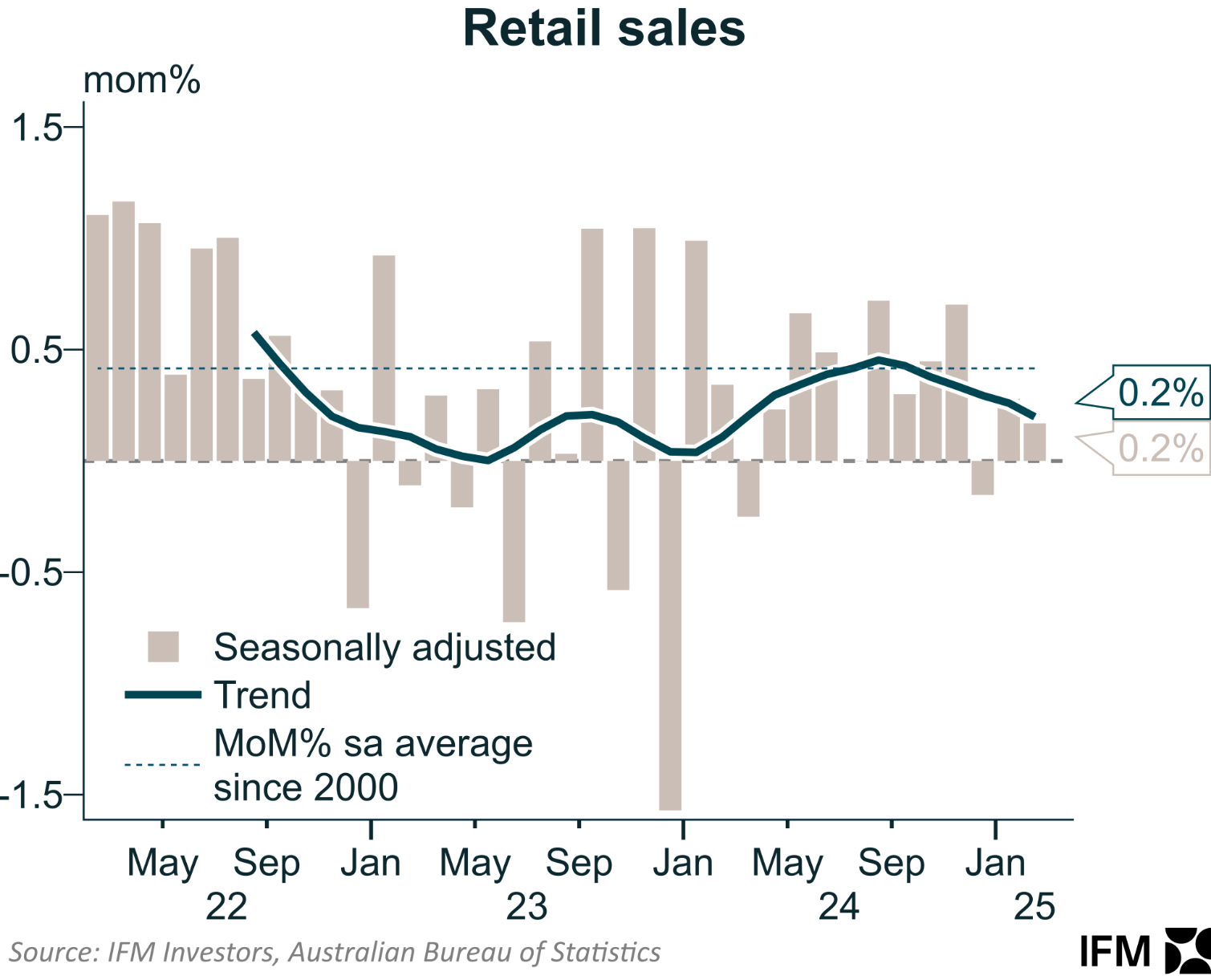
Nominal retail sales per capita declined in February, which followed 10 months of growth.
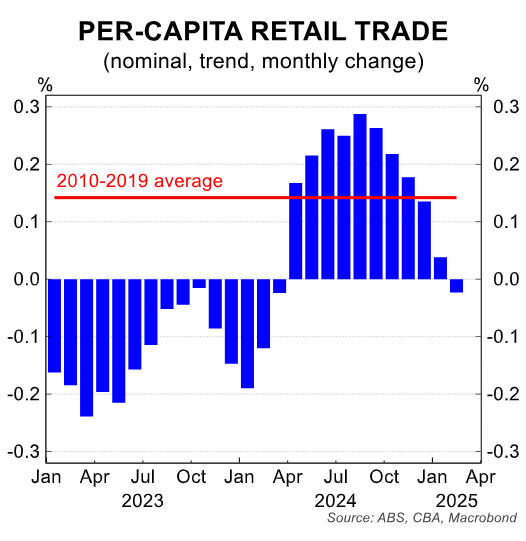
In fact, retail sales per capita remained just below their level in November 2022.
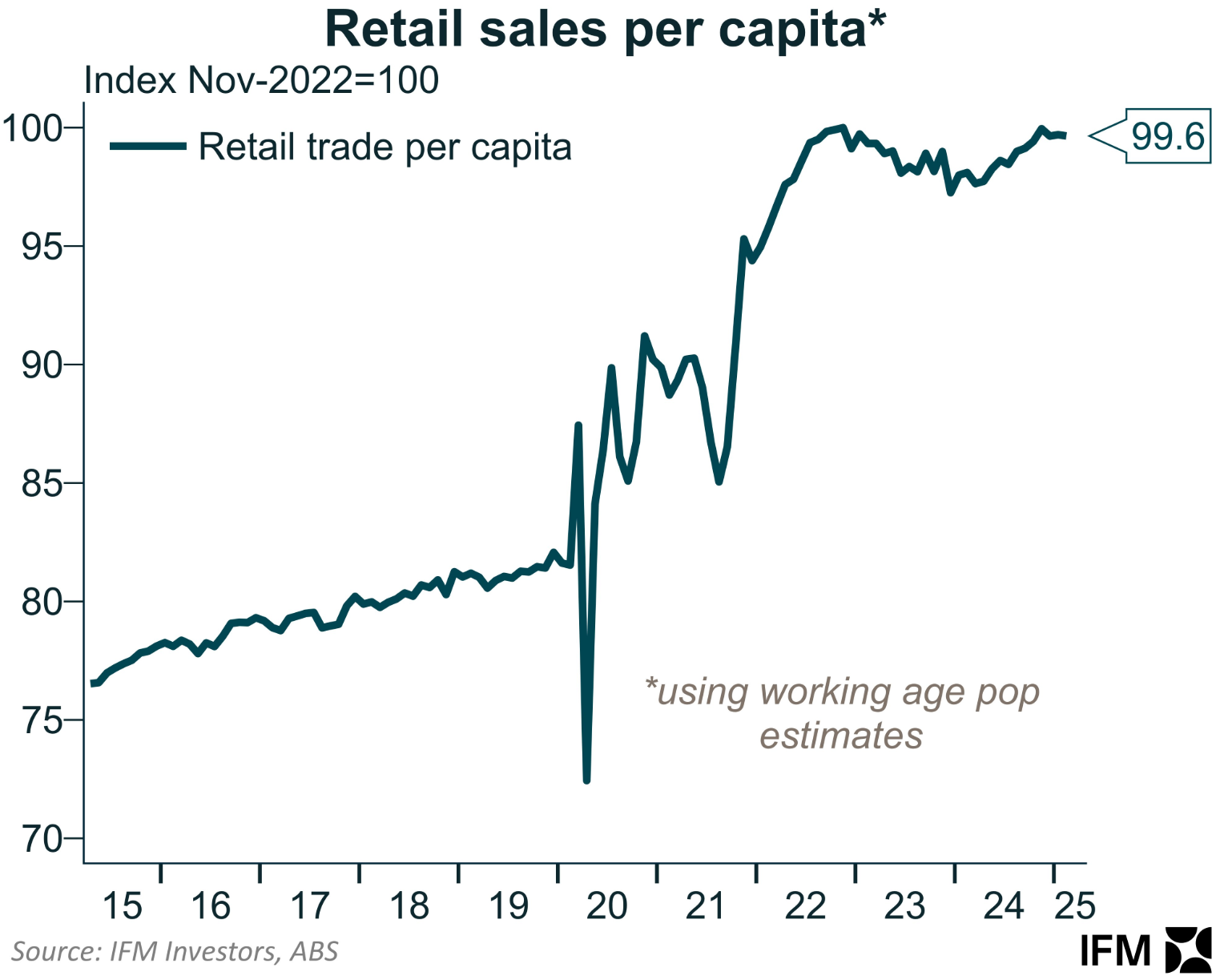
“Overall, the retail spending data points to a still cautious consumer”, noted CBA.
“Households have a higher capacity to spend owing to last year’s tax cuts and improving real incomes, but remain deliberate in when they choose to do so (i.e., when sales/discounting events are available) and the flow to savings”.
The above retail sales data adds weight to the view that interest rates are too restrictive and the RBA needs to cut further.
Following Tuesday’s hold, most economists anticipate the RBA to cut in mid-May after the Q1 CPI is released late this month.

